The hydraulic press is a device used for lifting heavy weights by the application of a much smaller force. It is based on Pascal’s law, which states that the intensity of pressure in a static fluid is transmitted equally in all directions. Let us discuss How we can calculate the Weight lifted by the hydraulic press.
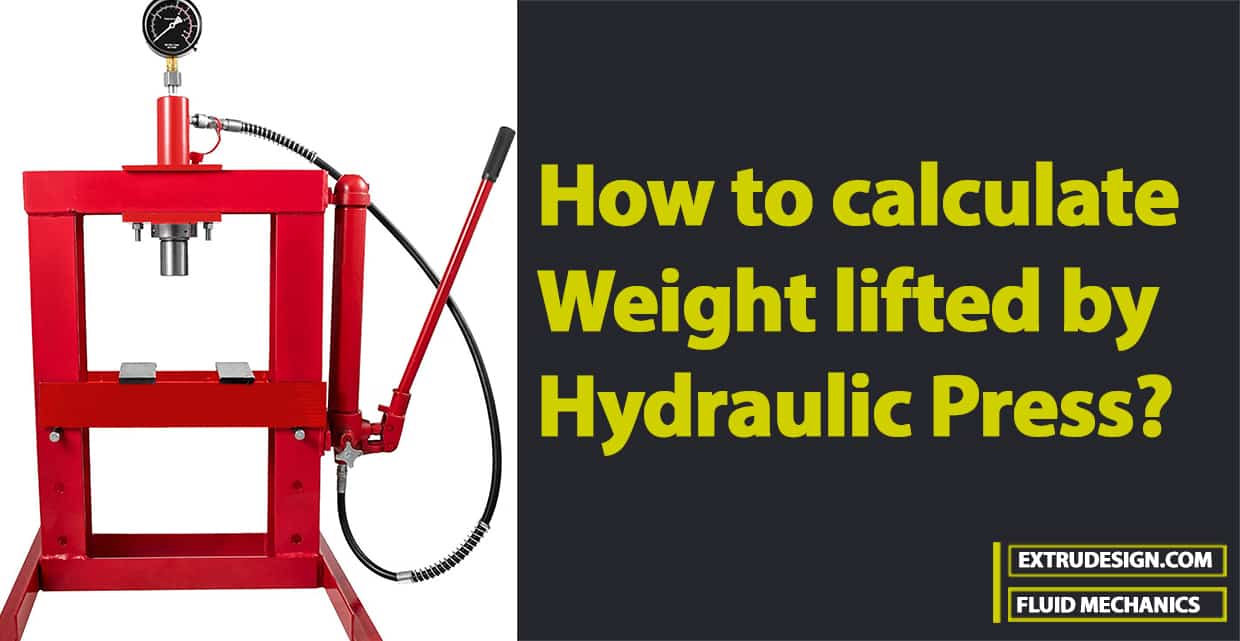
Fluid Systems
A fluid system is defined as a device in which power is transmitted with the help of a fluid which may be liquid (water or oil) or a gas (air) under pressure. Most of these devices are based on the principles of fluid statics and fluid kinematics. Following are the different devices come under the Fluid systems.
- The hydraulic press
- The hydraulic accumulator
- The hydraulic intensifier
- The hydraulic ram
- The hydraulic lift
- The hydraulic crane
- The fluid or hydraulic coupling
- The fluid or hydraulic torque converter
- The Air Lift pump
- The gear-wheel pump
Hydraulic Press
The hydraulic press is a device used for lifting heavy weights by the application of a much smaller force. It is based on Pascal’s law, which states that the intensity of pressure in a static fluid is transmitted equally in all directions.
The hydraulic press consists of two cylinders of different diameters. One of the cylinders is of large diameter and contains a ram, while the other cylinder is of smaller diameter and contains a plunger as shown in the following figure. The two cylinders are connected by a pipe. The cylinders and pipe contain a liquid through which pressure is transmitted.
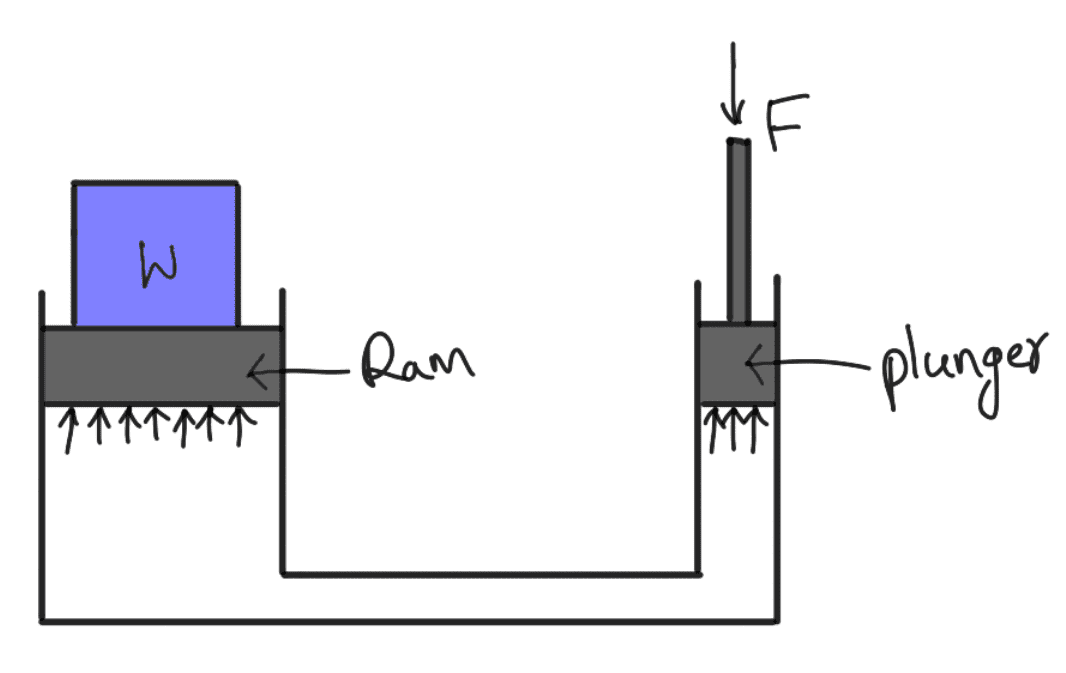
When a small force F is applied on the plunger in the downward direction, pressure is produced on the liquid in contact with the plunger. This pressure is transmitted equally in all directions and acts on the ram in the upward direction as shown in the above figure. The heavier weight placed on the ram is then lifted up.
Applications of Hydraulic Press: Usually, Hydraulic Presses are used in forging, molding, punching, clinching and other operations.
Let
W= Weight to be lifted,
F = Force applied on the plunger,
A = Area of ram,
a = Area of the plunger
p = Pressure intensity produced by force F
p = Force F / Area of Plunger = F /a
Due to Pascal’s law, the above intensity of pressure will be equally transmitted in all directions.
Hence, the pressure intensity at the ram will be p = F / a
But the pressure intensity on the ram is also = Weight / Area of ram = W / A
Equating the pressure intensity on the ram.
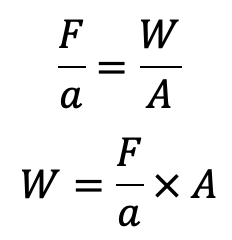
…. Equation (a)
Mechanical Advantage of Hydraulic Press
The ratio of weight lifted to the force applied on the plunger is defined as the mechanical advantage. Mathematically, the mechanical advantage is written as

…. Equation (b)
Leverage of the Hydraulic Press
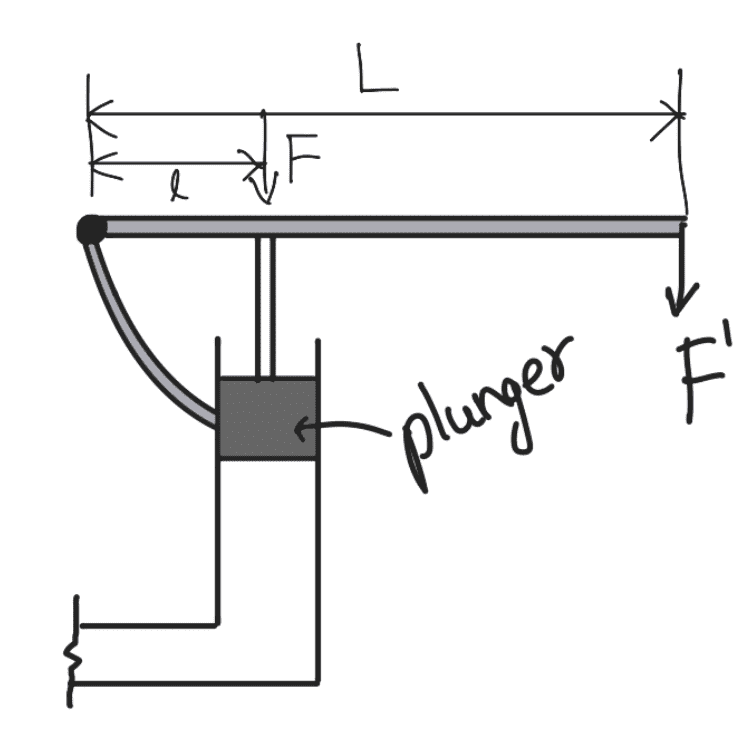
If a lever is used for applying force on the plunger, then a force F’ smaller than F can lift the weight W as shown in the above schematic Hydraulic press figure. The ratio of LIl is called the leverage of the hydraulic press.
Taking moments about Q
F’ × L = F × l
F = F’ × L ÷ l
Substituting the value of F in equation (a), we get the expression for weight lifted as
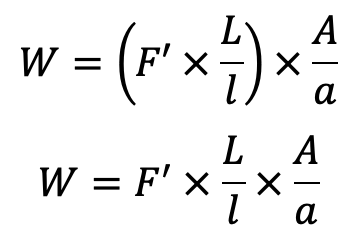
…. Equation (c)
Actual Heavy Hydraulic Press
Based on the nature of the work required, the actual hydraulic press is different in shape. But all actual hydraulic presses consist of a ram sliding in a cylinder to which high-pressure liquid is forced.
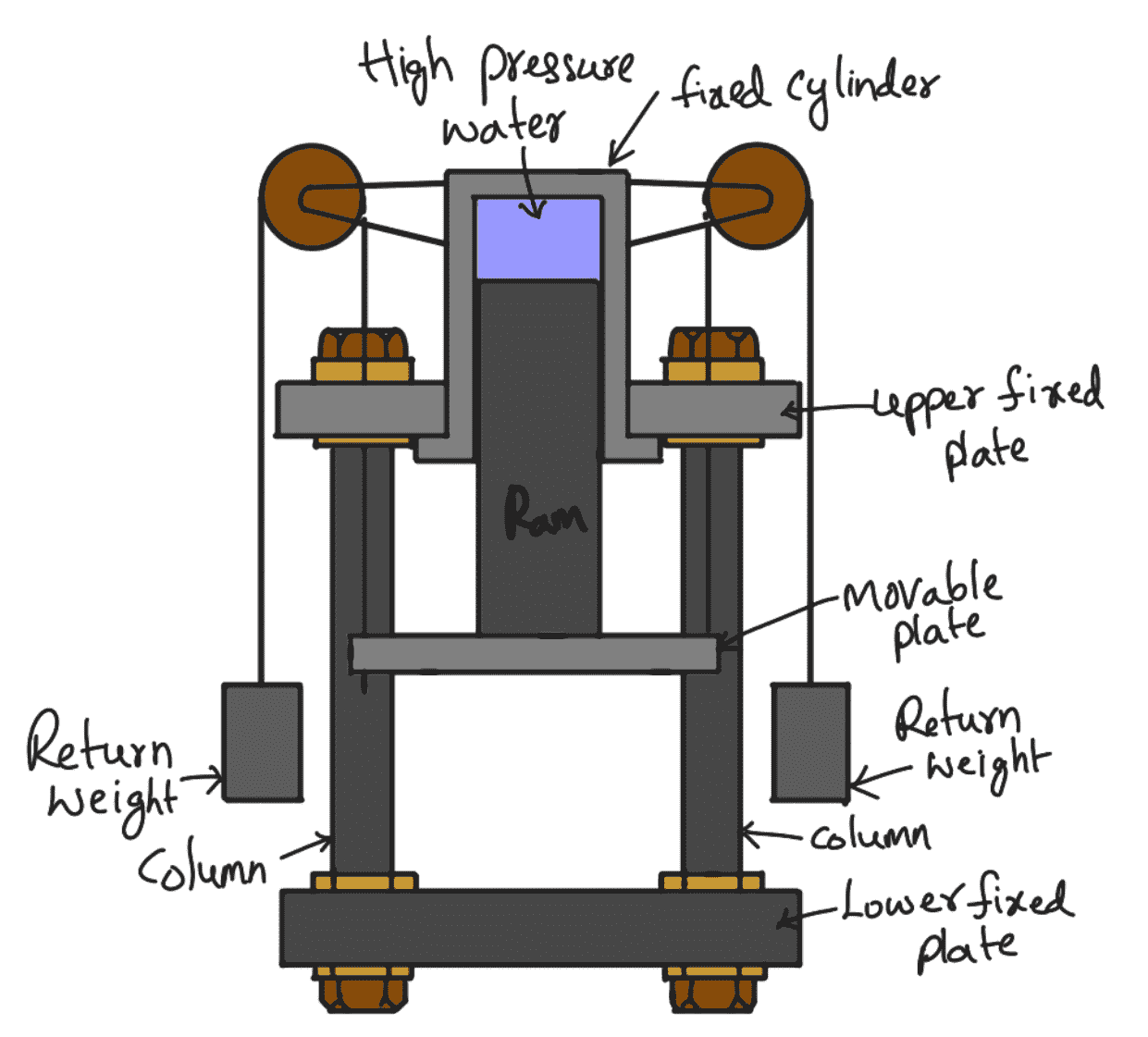
- The above schematic diagram represents one of the actual hydraulic presses.
- It consists of a fixed cylinder in which a ram is sliding. To the lower end of the ram, a movable plate is attached.
- As the ram moves up and down, the movable plate attached to the ram also moves up and down between two fixed plates.
- When any liquid under high pressure is supplied into the cylinder, the ram moves in a downward direction.
- When the ram moves downward direction it exerts a force equal to the product of the intensity of pressure supplied and the area of the ram, on any material placed between the lower fixed plate and the movable plate. Thus the material gets pressed.
- To bring back the ram in the upward position, the liquid from the cylinder is taken out.
- Then by the action of the return weights, the ram along with the movable plate will move up.
Example problem to calculate the Weight lifted by the Hydraulic Press
Let us solve an example problem to calculate the Weight lifted by the Hydraulic Press.
Problem Statement 1: A hydraulic press has a ram of 300 mm diameter and a plunger of 45 mm diameter. Find the weight lifted by the hydraulic press when the force applied at the plunger is 50N.
Answer:
Given data
Diameter of ram, D = 300mm = 0.30m
Diameter of the plunger, d = 45mm = 0.045 m
Force on the plunger, F = 50N
Let weight lifted = W N
Area of ram,

Area of Plunger

The weight lifted (W) is given by equation (a) as

When the 50N of force is applied at the plunger, the weight lifted by the hydraulic press is 2222.64 N.
Example problem to calculate the Force required for a Hydraulic Press
Let us solve an example problem to calculate the Force required for Hydraulic Press at the plunger.
Problem Statement 2: A hydraulic press has a ram of 200 mm diameter and a plunger of 30 mm diameter. It is used for lifting a weight of 3 KN. Find the force required at the plunger.
Answer:
Given Data
Diameter of ram D = 200mm =0.2m
Diameter of Plunger d = 30mm = 0.03m
Weight Lifted W = 3 kN = 3000N
Area of ram

Area of Plunger

Using relation given equation (a)

A force of 67.52N is required to lift the weight of 3 kN with the specified ram and plunger.
This is all about the Hydraulic Press. Let us know what you think about this article in the comment section below.

I found your work to be a very good explanationof a particular example of the principle of leverage. Thank you for doing this work.
Excellent post, Sundar! Indeed, one of the main applications of a hydraulic press is forging. The most important benefit of forging is increasing the strength and reliability of the forged metal components. Their tight grain structure makes them strong. The durability and ductility of forged items surpass those of welded, fabricated, and casted products. The key to successful forging is using top-notch forging equipment.